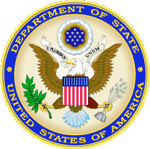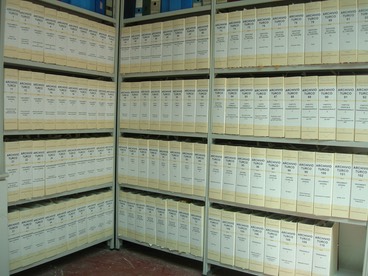 |
Released by the Bureau for International Narcotics and Law Enforcement Affairs, U.S. Department of State - Washington, DC, 1 March 2002
AFGHANISTAN
I. Summary
Despite a remarkably successful ban on opium production in Taliban-controlled areas during the 2000-2001 growing season, Afghanistan remained one of the world’s leading opium producers by virtue of continued cultivation in its northern provinces. Drug trafficking from Afghanistan continued throughout 2001 as traffickers relied on opium stockpiles as their source. By year’s end, reliable reports indicated that farmers throughout Afghanistan had taken advantage of the Taliban’s collapse to resume opium poppy cultivation.
The United States estimates Afghanistan’s total opium cultivation for 2000-2001 at 1,685 hectares with a potential opium production of 74 metric tons. Traffickers of Afghan opiates continue to market most of their product in Europe but also target the United States. While the July 2000 poppy ban in Taliban-controlled areas was widely respected, overall efforts by the UNDCP and NGOs to reduce supply had little success due to the lack of cooperation and support from the Afghan factions. Neither the Taliban nor the Northern Alliance took any significant action to seize stored opium or precursor chemicals, or to arrest and prosecute narcotics traffickers. Afghanistan is a party to the 1988 UN Drug Convention.
The December 4 Bonn Agreement by Afghan factions establishing an Interim Authority, which would cooperate with the international community in the fight against terrorism, drugs, and organized crime, represents a good first step. On January 17, 2002, the Afghanistan Interim Authority issued its own ban on opium poppy cultivation, and promised to work with donors to assure it could be implemented.
II. Status of Country
The Taliban’s July 2000 ban on opium production was widely respected, with only an estimated 85 hectares of poppy cultivated in areas under Taliban control. The primary factor in having the ban so widely respected was the draconian nature of the authorities’ enforcement efforts. However, based solely on the 1,600 hectares cultivated in Northern Alliance-controlled areas, Afghanistan remained one of the world’s leading opium producers. By the end of 2001, Taliban rule had ceased as a result of coalition military activity. Efforts to form an interim government and begin reconstruction activities were underway at year’s end. On December 4, 2001, the non-Taliban Afghan factions agreed to form an Interim Authority, which pledged to cooperate with the international community in the fight against drugs, and issued its own ban against poppy cultivation.
Despite the success of the poppy ban, stockpiles from previous years’ bumper harvests have continued to fuel regional drug trafficking. The regional drug trade corrupts local authorities, is the major factor behind rising heroin addiction in refugee and indigenous populations, and is responsible for increased levels of terrorism and drug-related violence in neighboring countries. The Afghan drug trade also undermines the rule of law by generating large amounts of cash, contributing to regional money laundering and official corruption in countries with weak economies and institutions.
III. Country Actions against Drugs in 2001
Policy Initiatives. In July 2000, Taliban "supreme leader" Mullah Omar issued a decree banning poppy cultivation in Taliban-controlled areas of Afghanistan in the 2000-2001 growing season. The ban was widely respected, and opium poppy cultivation was virtually eliminated in areas under the Taliban’s control. Taliban authorities reportedly incarcerated farmers who violated the ban and forcibly eradicated their crops. International observers who visited Afghanistan in early 2001 recognized the success of the poppy ban. International efforts to provide assistance to farmers and agricultural workers affected by the poppy ban were put on hold following the September 11 terrorist attacks in the United States and subsequent coalition military action.
The December 4, 2001 agreement on the formation of an Interim Authority "strongly urges that the United Nations, the international community and regional organizations cooperate with the Interim Authority to combat international terrorism, cultivation and trafficking of illicit drugs and provide Afghan farmers with financial, material and technical resources for alternative crop production." It remains uncertain whether the urgings and even the financial support of the international community will be sufficient to eliminate poppy cultivation in Afghanistan quickly. In the wake of hostilities, which faction is actually in control in which region varies. Whether factions will follow a ban on poppy cultivation, issued by the Interim Authority is uncertain. The Northern Alliance, for example, has, so far as the U.S. is aware, taken no action against cultivation and trafficking in the area it controls. There have also been recent reports of farmers cultivating a second opium crop in Northern Alliance-controlled areas. However, with the establishment of an Afghan Interim Authority, the issuance of its poppy ban, and the Authority’s declaration that it is ready to work with the donor community to assure the ban can be implemented, there is hope for a truly effective poppy ban in Afghanistan.
Accomplishments. The success of the Taliban poppy ban was a significant accomplishment during 2000, but success was achieved through draconian enforcement actions with no concern for poor farmers’ welfare, a series of policy actions unlikely to be replicated by a civilized administration. The ban was not accompanied by attempts to reduce drug trafficking. On the contrary, stocks from prior years were simply sold off at prices higher than could have been realized without the ban. With the resumption of widespread cultivation following the Taliban’s collapse and the continued presence of traffickers within Afghanistan and the region, the drug trade will continue to flourish absent concerted enforcement efforts by an interim government and the international community. The Interim Authority and important elements of the donor community are contemplating such action, but with so many development priorities contending for attention, and a very difficult situation on the ground, it is unreasonable to expect an effective ban immediately. In 2001 the United States continued to believe the UNDCP’s annual opium poppy survey in Afghanistan as well as the UNDCP’s crop monitoring programs are of great importance, and significantly add to the information needed to make effective policy and assess its effectiveness.
Law Enforcement Efforts. In the absence of an effective central government, a trained counternarcotics force, or an operational drug policy, there is virtually no counternarcotics law enforcement in Afghanistan at present. While the Taliban controlled most of Afghanistan, neither major faction—Taliban nor Northern Alliance—demonstrated the will to address continuing narcotics trafficking. Afghanistan does not yet have any effective arrangements to plan and coordinate drug control efforts. There is hope that the Interim Authority will address these shortcomings, with the assistance of the international community, as it strives to implement its ban on poppy cultivation in a more humane fashion than the Taliban.
Agreements and Treaties. Prior Afghan governments became party to a number of international conventions, and made specific commitments concerning the cultivation, trafficking, and abuse of illicit drugs in Afghanistan. Afghanistan is a party to the 1988 UN Drug Convention, the 1971 UN Convention on Psychotropic Substances, and the 1961 UN Single Convention on Narcotic Drugs. There was no evidence of substantial compliance with any of these agreements in Afghanistan in the period before the establishment of the Interim Authority in December 2001. Afghanistan also signed the UN Convention against Transnational Organized Crime in December 2000. The Interim Authority has pledged to abide by international legal obligations to which Afghanistan is a party, and has already begun to work with the international community to bring Afghanistan into compliance with its international obligations.
Cultivation/Production. During 2001, Afghanistan was the world’s second largest producer of opium and a major producer of cannabis. In prior years, (1998-2000) it was the number one producer. An estimated 74 metric tons of opium was produced in 2001. Poppy cultivation was reduced dramatically as a result of the ban on production in Taliban-controlled areas. By the end of 2001, however, there were widespread reports of a resumption of cultivation in Nangarhar, Helmand, Kandahar, and Oruzgan provinces, with those reports estimating a significant spring crop. While this cultivation violates the Interim Authority’s ban, the Authority lacks means to enforce its ban, and it must work with local power centers and the donor community if the ban is actually to be respected on the ground. In 2000, Helmand province alone accounted for more than half of the total opium poppy cultivation in Afghanistan and was responsible for 39 percent of the world illicit opium supply. Helmand’s key role in poppy production results from its endowment with good soil and favorable rainfall, so control of poppy cultivation in Helmand is key to any effective poppy ban.
An infrastructure for the production of morphine base and heroin has been developed in Afghanistan in recent years. This is in contrast to the situation in the early 1990s when nearly all heroin refining took place outside the country. Most laboratories refining opium into heroin operate in Nangarhar and Helmand provinces. Some laboratories also may be located near the Afghan borders of Central Asian countries.
Drug Flow/Transit. Opium trading in Afghanistan and Southwest Asia is well-organized. Traders offer growers advances to finance inputs and to tide growers over while the crop is in the ground. They visit households to buy opium. This credit, or advance payment on future opium production, is an integral part of livelihood strategies in poppy-producing areas of Afghanistan. The relatively stable value of opium and its nonperishability mean that it also serves as an important source of savings and store of value among traders and cultivators. Taliban and Northern Alliance authorities have reportedly facilitated, and profited from, the internal transit and export of drugs.
As much as half the illicit drugs produced in Afghanistan could be consumed/seized in Afghanistan and neighboring Iran, Pakistan, Tajikistan, Uzbekistan, Turkmenistan, and other states in Central Asia and the Persian Gulf, according to the UNDCP. U.S. seizure data suggest that at least five percent (approximately one metric ton) of the heroin imported into the United States originates in Afghanistan. Smuggling routes are varied. Historically heroin has been trafficked to Europe and North America through Pakistan, Iran, and Turkey, but smuggling routes through the Central Asian Republics are proliferating. Afghanistan provides raw opium primarily for local consumption in Pakistan, Iran, and the Persian Gulf, where trafficking organizations have strong links.
On a regional basis, the UNDCP operates a number of programs to reduce Afghan drug trafficking in Southwest Asia, including specific law enforcement programs with Turkmenistan, Uzbekistan, Tajikistan, Pakistan, and Iran. Tajik, Iranian, and Pakistani law enforcement forces are engaging more frequently in armed confrontations with well-equipped narcotics traffickers moving large quantities of drugs across the Afghanistan border, and drug seizures in all these countries are quite high.
Corruption. Under Taliban administration in Afghanistan, there was good reason to believe that the Taliban as a matter of policy and practice encouraged or facilitated the illicit production and distribution of opium and opium-derived drugs. The Taliban benefited from the opium traffic by taxing it, and even apparently benefited from its own ban on production by dumping opium stocks at prices higher than could otherwise have been achieved. The newly established Interim Authority has issued a ban on poppy cultivation and offered to work closely with the international community to see that the ban is enforced. The Authority’s Chairman, Hamid Karzai, has promised the international community good governance and efficient use of development assistance.
Domestic Programs (Demand Reduction). Drug abuse is rising in Afghanistan. The increase in opium and heroin production in recent years inevitably has made more drugs available on the local market. According to the UNDCP, heroin, opium, and hashish are the most commonly abused drugs, along with a wide variety of easily available pharmaceutical drugs such as analgesics, hypno-sedatives, and tranquilizers. Heroin, opium, and other narcotics are almost exclusively ingested orally or inhaled, and are very rarely injected. Of particular concern is opium abuse among women and passive opium exposure of very young children.
Heroin addiction is growing, especially in Jalalabad, Kabul, Kandahar, Herat, and Afghan refugee camps. A Taliban court in October 1997 issued a decision that "addicts of illicit drugs should be referred to a hospital/treatment center to receive proper treatment." Nonetheless, throughout 2001, the Taliban incarcerated rather than treated drug addicts. Some non-specialist hospitals and clinics in Afghanistan provide treatment to drug users. In Badakhshan province, where ten to 25 percent of the local population is believed to use opium, at least one NGO has set up drug treatment facilities, but security concerns have forced the UNDCP to close a demand reduction program in Badakhshan. Needless to say, among development priorities for the new Afghanistan will be quick re-establishment of some facilities for treating addiction.
The UNDCP’s drug awareness program in Afghanistan is limited by a lack of resources. Its drug demand reduction program focuses on the need to provide community-based drug treatment and prevention programs. In 2000, the UNDCP organized campaigns in Kandahar using the district Shura, community representatives, and local representatives. The UNDCP also trained over 100 female community mobilizers in drug awareness, basic health, and sanitation. Every effort will be made to reestablish drug education programs now that Afghanistan is no longer under Taliban rule.
IV. U.S. Policy Initiatives and Programs
Regionally, the United States is cooperating with the UNDCP and Afghanistan’s neighbors to build national and regional capacities to counter the Afghan drug trade. The United States has been active in the UN-sponsored Six Plus Two Group (Iran, Pakistan, China, Tajikistan, Uzbekistan, and Turkmenistan, plus the United States and Russia) in efforts to launch a regional counternarcotics initiative. In September, the Six Plus Two Group held a technical meeting in Islamabad to further the Regional Action Plan to counter the Afghan drug trade.
The Road Ahead. As the focus in Afghanistan shifts toward development in the wake of formation of an interim governing authority and a Donor Group Pledge Session, the United States will work to ensure that international counternarcotics goals are taken into account. Toward this end, the United States will work with other donors on a strategy to eliminate opium poppy cultivation. There is also a need to develop indigenous law enforcement capacity and a functioning judicial system within Afghanistan.
In the meantime, narcotics trafficking in the region will continue, despite the best efforts of the Interim Authority and the international community. The United States seeks to contain the flow of opium and heroin from Afghanistan through a stronger focus on regional counternarcotics cooperation. As coordinator of the Six Plus Two counternarcotics initiative, the United States will continue to support and advance the Regional Action Plan and the efforts of the Interim Authority to enforce its ban on poppy cultivation.
Afghanistan Statistics
(1993–2001)
| Opium | 2001 | 2000 | 1999 | 1998 | 1997 | 1996 | 1995 | 1994 | 1993 |
| 1,685 | 64,510 | 51,500 | 41,720 | 39,150 | 37,950 | 38,740 | 29,180 | 21,080 | |
| — | — | — | — | — | — | — | — | — | |
| 1,685 | 64,510 | 51,500 | 41,720 | 39,150 | 37,950 | 38,740 | 29,180 | 21,080 | |
| 74 | 3,656 | 2,861 | 2,340 | 2,184 | 2,099 | 1,250 | 950 | 685 |
1Note: Potential production estimates for 1996-1999 have been revised upward from previous INCSRs, reflecting improved methodologies for estimating opium yields. The estimates of land area under poppy cultivation in Afghanistan for those are unchanged and have not been revised.


